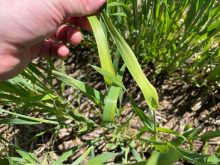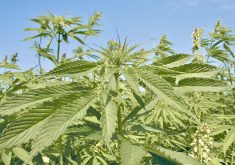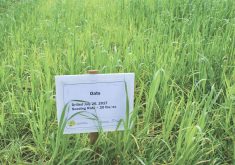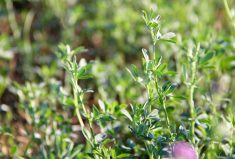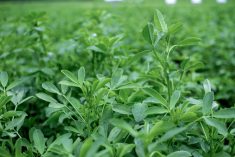Dry weather has affected hay and pasture yields in southwestern Ontario but the impact should be mitigated by a strong hay inventory and some bumper crops in eastern Ontario and Quebec.
Ontario Forage Council (OFC) President Terry Nuhn said most areas west of a line running roughly from Toronto to Barrie have been persistently dry. Areas east of that line generally saw sufficient rain for good forage growth and some farmers further east and north had more rain than they wanted.
Why it matters: Some dairy producers in southwestern Ontario may have to supplement winter feed supplies due to poor second and third-cut yields and dwindling pastures.
Read Also
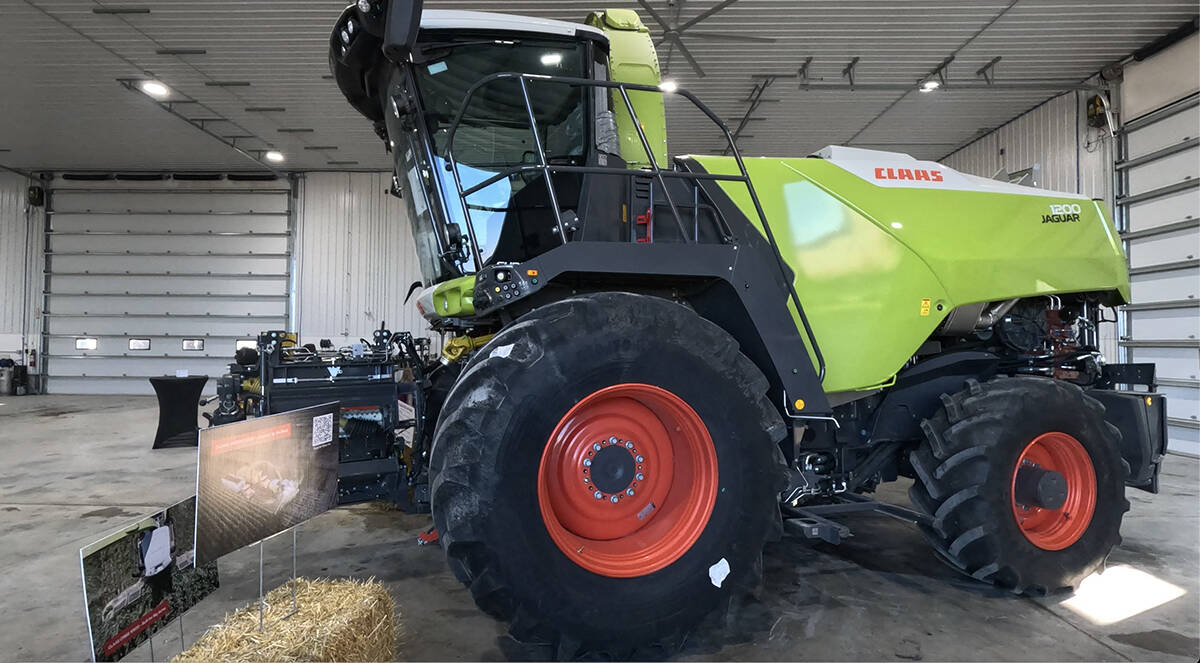
Claas brings 1000 Series SP forage harvesters to Canada
In mid-August, Claas unveiled its new line of Jaguar forage harvesters at an event in Visalia, California, deep in the heart of that state’s dairy region.
Ample rainfall in those regions led to bumper forage yields on second and third cuts in eastern Ontario and Quebec, Nuhn said.
“In fact, I had a call from a producer in eastern Ontario just yesterday asking if there could be a chance he’d be able to send some hay (to the southwest).”
Christine O’Reilly, forage and grazing specialist for the Ontario Ministry of Agriculture, Food and Rural Affairs, agreed with Nuhn’s assessment of weather impact.
“Dry weather was only an issue in southwestern Ontario,” she told Farmtario. “The main challenge in the east was finding a window of dry weather to get the crop out of the field. Northwestern Ontario, Algoma and Manitoulin faced similar wet weather challenges at harvest.”
O’Reilly said forage survival through winter played a bigger role throughout the province in first-cut yields.
April and May were somewhat cooler than normal in the southwest. Nuhn said some producers saw delayed maturity in alfalfa as a result. Harvest was delayed and there has been little rain since.
“Second-cut yield trends seem to follow precipitation patterns,” O’Reilly said. “Those who have had some rain since first cut have more regrowth than fields that stayed dry.”
Despite poor regrowth in the southwest, many producers have taken the second cut and are now looking at poor yields for a third.
Nuhn said it’s not worth waiting on second cut and hoping the forecast turns wet. After flowering, the alfalfa isn’t going to grow no matter whether it rains or not.
“You’re almost better to take what you can and maybe it’ll still be early enough that you might get some more growth if it does get moisture,” he said.
O’Reilly added that when plants are stressed they sometimes “rush their development, so the ideal growth stage may pass quickly.”
For grazing managers, mid-July typically signals what’s known as “the summer slump” even in non-dry years.
“Growth rates normally decline, although timely rains can prevent the crop from going dormant,” she said. “Well-managed pastures have healthy grass plants that can recover faster after weather stress than pastures with a history of poor management.”
But in dry years like this year in the southwest, “grazing managers need to find ways to slow down the rotation (and) lengthen the rest period for each paddock.”
Strategies for extending the rest period include feeding supplemental forage, reducing animal demand or adding more acres for grazing, possibly by grazing a hay field or annual forage crop. With supplemental feed, start before the livestock run out of pasture.
Nuhn said he is confident those in need of extra winter feed will be able to find it. He encouraged producers – both buyers and sellers – to use the OFC-hosted Ontario Hay Listings online portal.
Last year there was a bumper crop across much of the province “so we had good inventories coming into this year.”






